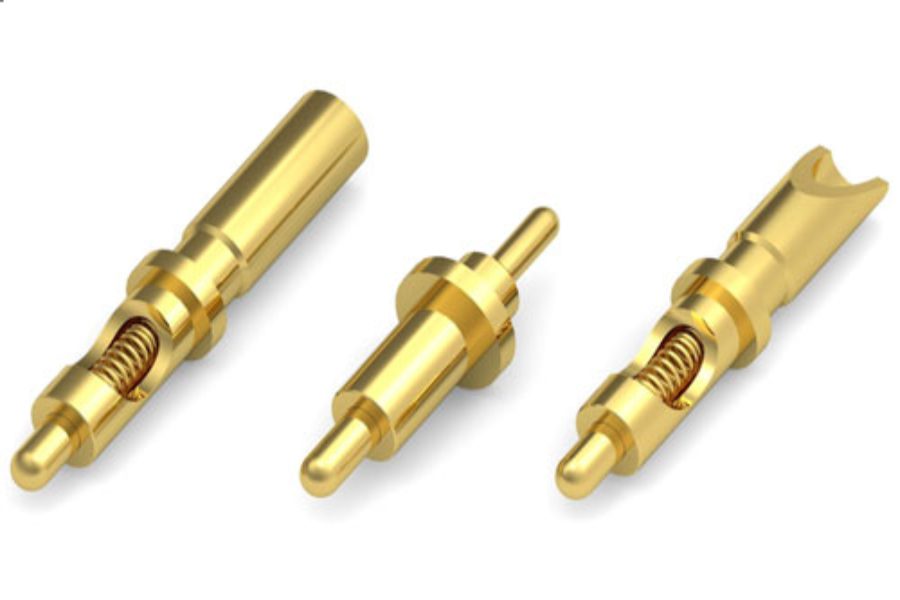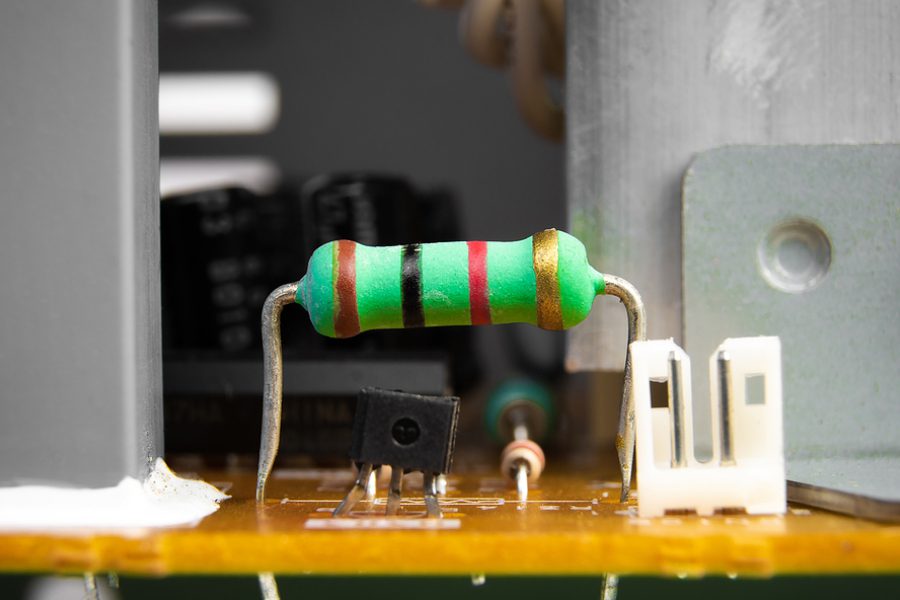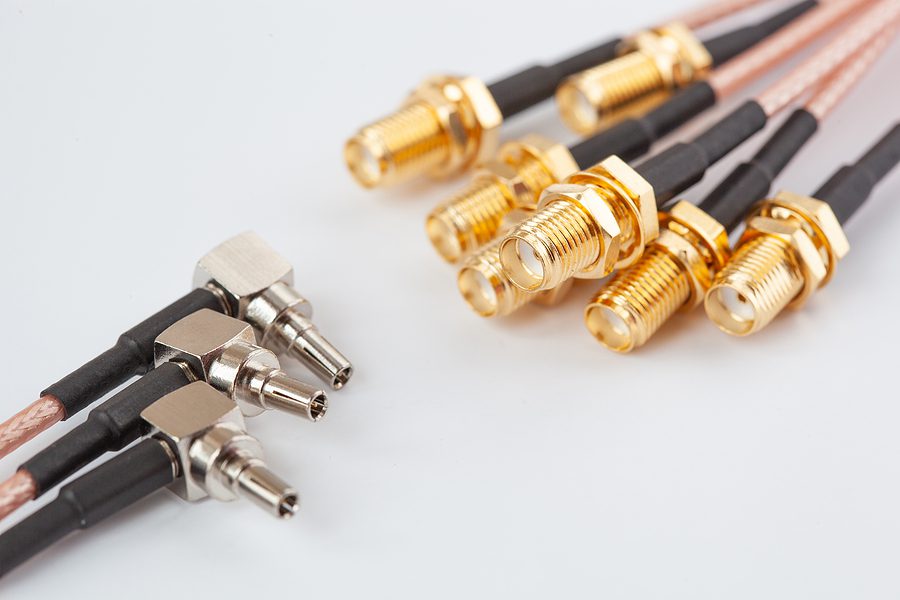
A Beginner’s Guide to Understanding Electronic Connectors
Connectors, such as pogo connectors, are an important component that enables many devices in consumer electronics, industrial machinery, and communications equipment to function and be complete.
These connectors facilitate the temporary or permanent connection of two subsections within a circuit, allowing for the assembly, installation, or power supply of devices. Let’s break down the key aspects of electronic component connectors below:
Types of Connectors
- Wire-to-Wire Connectors
Wire-to-wire connectors are the elementary architects of connectivity, tasked with the straightforward yet essential role of joining two separate wires together. Their design ensures a secure and reliable electrical connection, enabling the transmission of signals, power, and data between the wires. Whether it’s within household appliances, automotive systems, or intricate electronic devices, wire-to-wire connectors lay the foundation for seamless communication.
- Wire-to-Board Connectors
Wire-to-board connectors act as the bridge between individual wires and the intricate circuitry of a printed circuit board (PCB). These connectors facilitate the secure attachment of wires to designated contact points on the board, enabling the transmission of signals and power to and from the electronic components soldered onto the PCB. Their versatility makes them a cornerstone in countless applications, from consumer electronics to industrial machinery.
- Board-to-Board Connectors
When electronic systems demand a collaborative effort between distinct circuit boards, board-to-board connectors emerge as the unsung heroes. These connectors facilitate the establishment of seamless connections between separate boards, enabling them to work in harmony as a unified system.
With their capacity to transmit high-speed data and power across varying distances, board-to-board connectors find their home in applications ranging from data centres to aerospace technology.
- Plug and Socket Connectors
Plug and socket connectors, also known as male-female connectors, feature complementary components that interlock, creating a secure and reliable connection. Their versatility spans applications ranging from household appliances to computer peripherals. As the backbone of power transmission and signal exchange, plug and socket connectors seamlessly marry convenience with functionality.
- Terminal Blocks
When the need arises to consolidate multiple wires or components into a single connection point, terminal blocks are the solution of choice. These blocks provide a structured platform for connecting and organising wires, facilitating the efficient distribution of power and signals. Terminal blocks are widely employed in industrial settings, where the complexity of wiring demands meticulous organisation and streamlined connectivity.
- Circular Connectors
For scenarios where connections demand repeated engagement and disengagement, such as audio jacks or ruggedised equipment, circular connectors take the spotlight. These connectors feature a cylindrical design and locking mechanisms that ensure a secure yet easily detachable connection. Their robust construction and resistance to environmental factors make them ideal for applications in sectors ranging from aerospace to entertainment.
Components of a Connector
- Housing
The core of each connector is its housing, an outer shell that functions as both a protective barrier and a support structure. Made from materials like plastic, metal, or ceramics, this housing shields the internal components against external factors like moisture, dust, and physical damage. It also provides a platform for arranging the internal components in a coherent and organised manner.
- Contacts/Pins
Contacts, also known as pins, constitute the conduits through which electrical signals flow. These metal components are the lifelines of connectors, carrying data, power, and signals from one component to another.
The contacts can be of two types: male (pins) or female (sockets). The male pins fit snugly into the female sockets, establishing a secure and reliable connection. Contacts are designed with precision to minimise resistance, ensuring efficient signal transmission.
- Locking Mechanism
Connectors often incorporate a locking mechanism to prevent accidental disconnection and ensure a stable connection. This mechanism varies based on the connector type and application, ranging from simple latches to more intricate locking mechanisms. When engaged, the locking mechanism holds the connector components in place, preventing vibrations, movement, or external forces from disrupting the connection.
- Insulation
Adjacent pins or wires within a connector can carry different electrical signals or power levels. Insulation materials are strategically placed to prevent unintended electrical contact between these adjacent components. Insulation is essential in maintaining the integrity of the connection and preventing short circuits that could lead to system malfunction or damage.
- Strain Relief
In environments where tension, movement, or vibration is prevalent, connectors are subjected to mechanical stress that could potentially dislodge wires from their contacts.
To counter this, strain relief is integrated into connectors. Strain relief features include flexible materials, such as rubber or plastic, that anchor the wires and provide a degree of flexibility, ensuring that the wires remain securely attached despite external forces.
- Shielding
Shielding is a crucial component for connectors in environments where electromagnetic interference (EMI) poses a threat to signal integrity. Shielding involves using conductive materials or coatings to create a barrier that intercepts and absorbs electromagnetic waves, preventing them from affecting the signals being transmitted through the connector. This is particularly important in high-frequency applications or areas with strong electromagnetic fields.
- Gaskets and Seals
Connectors need an extra layer of protection in demanding environments rife with dust, moisture, chemicals, or extreme temperatures. Gaskets and seals step up to the plate by forming a barrier against external contaminants. These components are often made from resilient materials like rubber or silicone, effectively preventing the ingress of dust, water, and other particles that could compromise the connector’s functionality and longevity.
Electrical Characteristics of Connectors
- Voltage Rating
The voltage rating of a connector is a pivotal measure that delineates the maximum electrical potential it can endure without succumbing to breakdown. Connectors are engineered with materials that can handle specific voltage ranges, ensuring that the connector remains operational without posing a risk to the connected devices.
- Current Rating
A connector’s current rating is key to its capacity to ferry electrical current without overheating or causing damage. This rating is a reflection of the connector’s ability to manage the heat generated due to the electrical resistance within its contacts.
Exceeding the current rating can result in increased resistance, which generates heat, potentially leading to connector degradation, melted insulation, or even fire hazards. Connectors with higher current ratings are often equipped with larger and more robust contacts capable of efficiently managing the flow of current.
- Impedance Matching
Impedance refers to the opposition that electrical components offer to the flow of alternating current. When a connector cannot provide the necessary impedance match, signal reflections and distortions occur, degrading the quality of data transmission.
This phenomenon becomes especially pronounced in high-frequency scenarios where signal integrity is paramount, such as in data communication and radio frequency applications. Connectors designed for these contexts employ precise impedance control to minimise signal loss and distortion, ensuring the transmitted data arrives intact and accurately.
Design Considerations of Connectors
- Contact Resistance
Contact resistance is a pivotal aspect in connector design, influencing signal transmission quality. Lower contact resistance ensures electrical signals traverse the connector with minimal impedance, avoiding signal degradation and loss.
- Mechanical Durability
The lifespan of a connector is marked by the number of mating and unmating cycles it endures, subjecting it to mechanical stress. Mechanical durability ensures connectors can withstand the rigours of repeated connections without compromising performance.
- Ease of Assembly
Connectors that offer impeccable performance must also ensure seamless integration into electronic systems. Connectors prioritising ease of assembly enhance efficiency, reduce errors, and contribute to streamlined manufacturing processes.
- Polarisation
Ensuring connectors are correctly mated is a fundamental consideration in design. Polarisation addresses this challenge by designing connectors to fit in only one orientation, thereby preventing incorrect connections.
Polarisation becomes indispensable in scenarios where connectors carry diverse signals or voltages, safeguarding against potential damage due to mismatched connections. This attention to orientation adds a layer of safety and reliability, ensuring that connectors consistently perform their intended functions.
- EMI Shielding
The design characteristic of electromagnetic interference (EMI) shielding takes centre stage in applications where signal integrity is paramount. For instance, EMI shielding is crucial in medical, aerospace, and telecommunications industries, where even little signal disruptions can lead to critical errors.
Connectors with efficient EMI shielding use conductive materials and specialised enclosures to form an impenetrable shield against external electromagnetic fields, preserving signal fidelity and eliminating interference-related issues.
Conclusion
Connectors provide a simple yet crucial functionality to all modern electronics used today. A good understanding of their properties and which applications they are suited for is vital to determining which ones are best for your requirements.
As a leading electrical components store and distributor in Singapore, Wiselink is your one-stop shop for connectors and many other genuine products sourced directly from reputable manufacturers across the globe. To start your electronic components sourcing journey, contact us anytime or visit our website to browse our extensive product catalogue.




